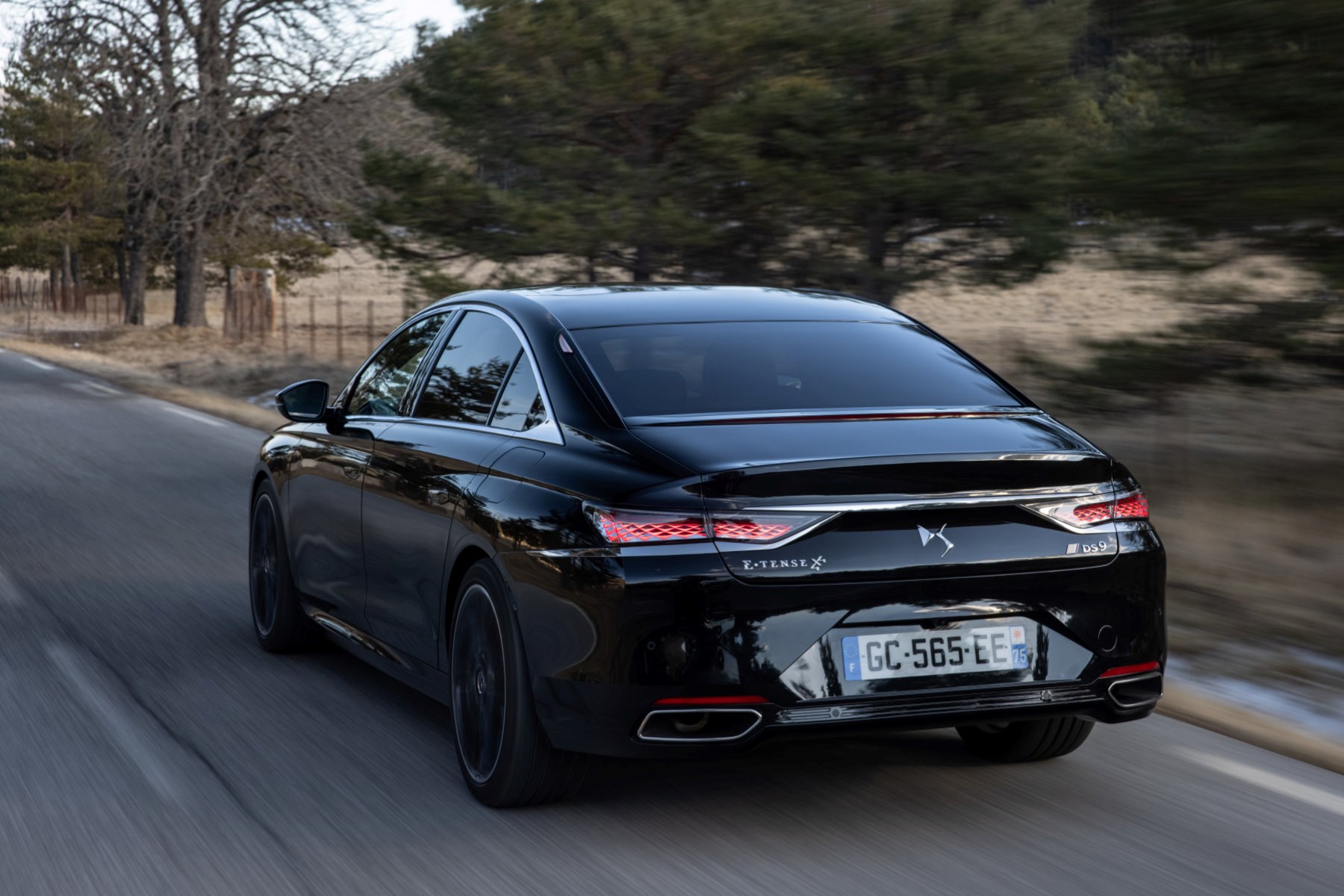► DS 9 E-Tense 250 & 360 driven
► Plush cabin and loads of tech
► Refinement is the top priority
If familiarity breeds contempt, does unfamiliarity propagate respect? DS certainly hopes so.
The DS9 hybrid saloon will account for around 0.02% of UK new car sales. It can’t compete on volume in the executive four-door market with King Kong and Godzilla, aka the BMW 5-series and Mercedes E-Class.
But its obsessive delivery of comfort and shunning of sport should carve it out a micro-niche.
More detail please: engines, prices, range
The 9 will only be available as a 4.9m-long saloon: unlike its BMW and Audi rivals there won’t be a five-door estate. No diesel engines either: the base powerplant is a 222bhp turbocharged four-cylinder petrol, complemented by two plug-in hybrids, with 222bhp or 355bhp and all-wheel drive.
Admittedly, the 222bhp petrol will soon disappear. That’s just how much DS is going after the business market, who presumably all want PHEVs for lower BiK rates.
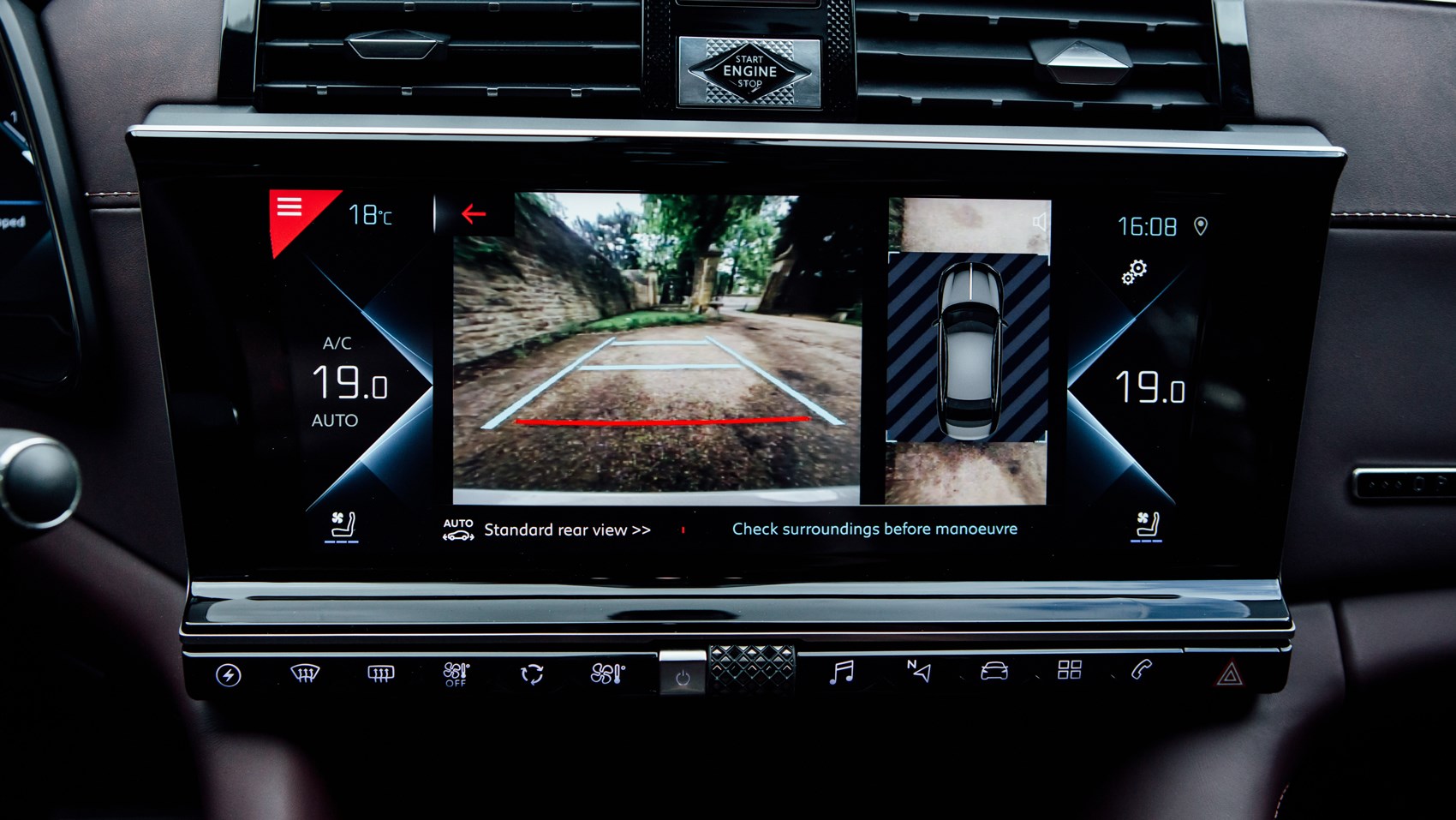
The range structure is nice and simple. Prices start from £47,100 for the Performance Line + with the less powerful powertrain, complete with sporty alcantara-trimmed seats, aluminium pedals and a matt black front grille.
Prices end at £57,200 for the Rivoli + in 355hp trim. It majors on luxury and technology and includes leather seats with a massage and cooling function, manoeuvring camera with a 360˚ field of vision and Level 2 driver assistance to stop, start and keep you in lane in highway traffic.
Let’s get driving
DS expects the 222bhp plug-in hybrid to be its best-seller. It has an 11.9kWh lithium-ion battery, which can supply up to 43 miles (officially, we reckon more like 20-25 miles) of zero-emissions driving in Electric mode. Petrol power, e-motor power or a combination of both is sent strictly to the front wheels via an eight-speed automatic transmission.
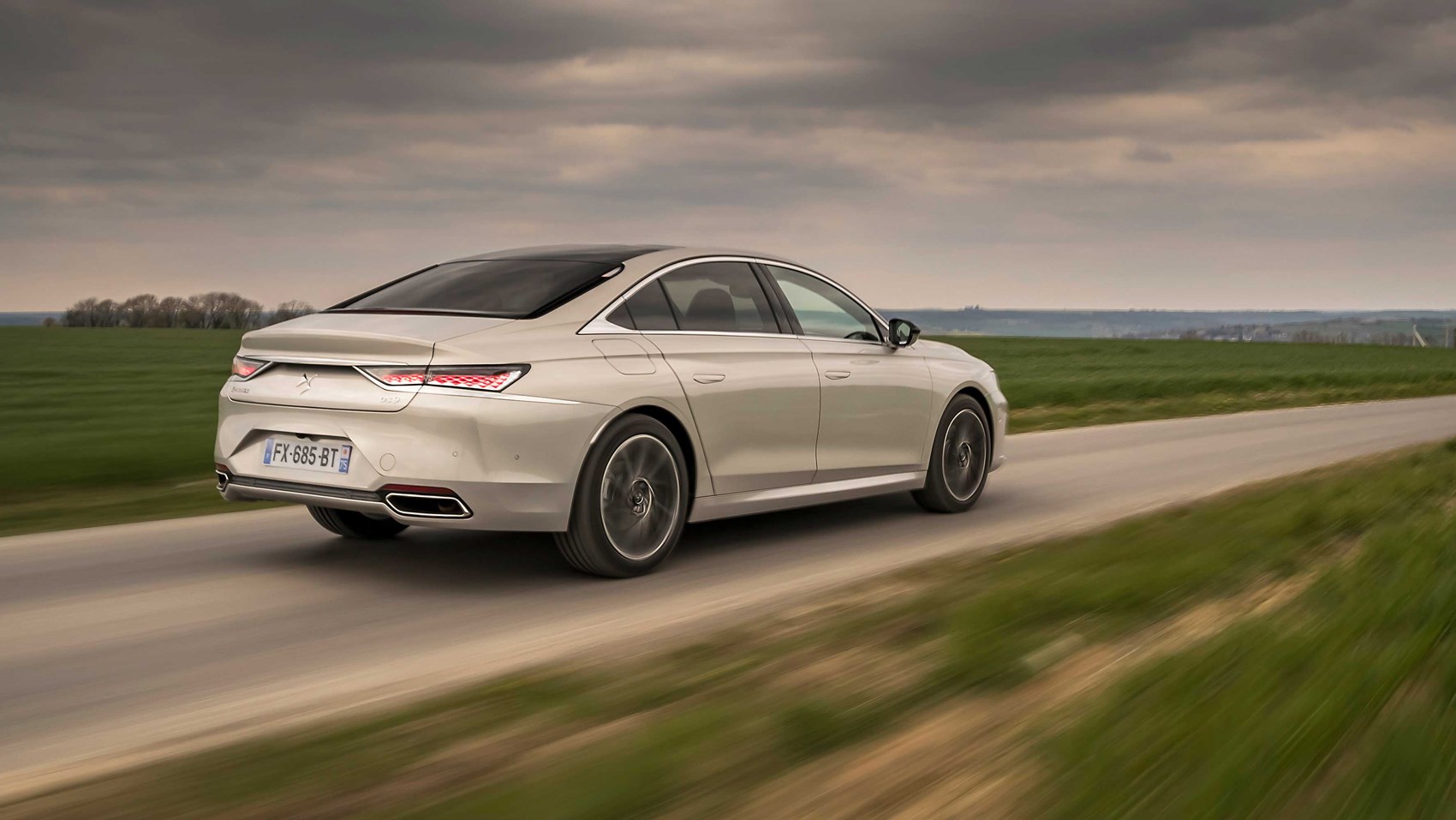
The four-wheel drive 355hp has a four-cylinder 200hp engine and two electric motors. The first has 110hp and is integrated into the gearbox at the front while the other is 113hp and linked to the rear axle. Officially it’ll cover 33 miles in zero emissions mode. Once again, we’d like to see someone achieve this without the aid of a 33-mile high mountain road.
The 360 is the high performance model and its rear motor and four-wheel drive system is fitted in the same factory where DS’s Formula E car is made. Which helps explain some of the cost differential between the two PHEVs.
How comfortable is the DS 9?
First task is to assess the 9’s ride quality by sticking it in Comfort mode. All PHEVs get DS Active Scan Suspension. A camera looks out over that gauche bonnet-mounted sabre, scanning the road so the AI brain can instantly stiffen or slacken the damping force to optimise occupant comfort.
And the 9 genuinely flows down roads, taking bumps and potholes in its stride. But the silky comfort doesn’t come at the expense of body control: the ride is not unsettlingly floaty.
Aural refinement is impressive too: neither the 19-inch (Performance Line +) or 20-inch (Rivoli +) Michelin tyres really generate much noise until we hit motorway speeds. It helps that the 9 largely runs on electric power: it propels us for just over half of our 42-mile and half of our 92-mile journeys.
How much kick from that petrol-electric combo?
We’ll kick off with the slower model. When the 180hp 1.6-litre engine chimes in, the noise is so distant it feels mounted in the Rudolph-position-in-Santa’s-sleigh powertrain. Even when you stomp the throttle, the mix of whistly turbo and bovine engine groan is well muted.
That produces a decent surge of midrange acceleration, for the odd overtaking burst or launching into motorway traffic. For the record, the acceleration race takes 8.3sec from standstill to 62mph.
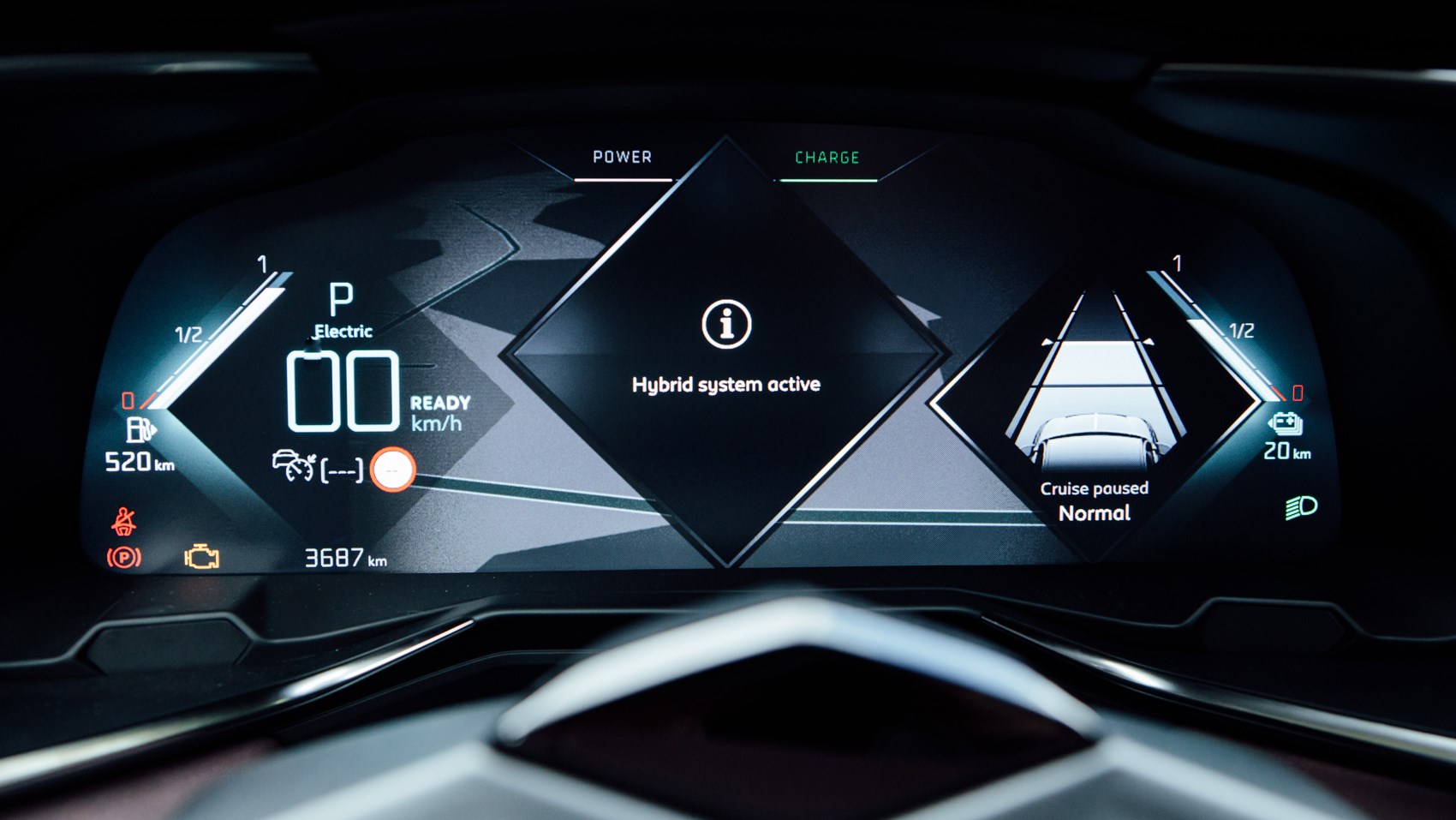
The 360, as you’d imagine with a 2.7 sec quicker 0-62mph time, feels a lot faster. It’s effortless if a little inert. Despite the DS Performance moniker, badges and upgrades (including bigger brakes and wheels) it’s still no performance saloon.
The brake pedal’s initial bite feels a little marshmallowy (maybe a tribute to the hydraulic brakes of the original DS?), but that can be said of many French cars from the Stellantis group. They can be snatchy in traffic queues, which leads to some noticeable pitching of this softly suspended car.
For a long and heavy car, the DS 9 hauls itself competently through corners, with progressive bodyroll and sufficient front-end grip. The steering is nicely linear and pleasantly weighted, but communicates as eagerly as a teenager nursing their first hangover.
There’s not much difference in the way the 360 drives despite the four-wheel drive. Sure it’s a bit faster out of corners but in day-to-day driving you’d be hard pressed to notice the differences.
What kind of fuel economy did you get?
During an Oxfordshire tour stringing together myriad new-build construction sites, the mix of A-road, towns and 10 miles of motorway returned 70.5mpg from the 250 model. Ratified carbon dioxide emissions are 33g/km.
A 92-mile jaunt in the 360 warranted 42 mpg. Not brilliant, but a fair chunk of this was on the motorway which isn’t that helpful for a PHEV.
You can run a DS 9 on e-power alone at motorway speeds given sufficient battery charge, and there’s an E-Save mode which will hold 12 miles, six miles or all your e-power, should you need to bank it for zero emissions areas. Charging the battery pack on a 7kW wallbox takes just under two hours, or almost five hours from a domestic plug.
Interestingly, the 360 comes with a regeneration coach, co-developed with the Formula E team. It gives you a score depending on how economically you drive the car. Yes, a racing team giving you a telling off for driving quickly. Welcome to 2022.
And what’s the cabin like?
It’s the design inside and out that will make or break the DS 9. The exterior is classical three-box saloon, though the wavy grille, waterfall DRLs and rear ‘cornet’ spotlamps – a nod to the legendary 1955 DS 19 – are typical 21st century DS details. To these eyes the Peugeot 508, also based on this EMP2 chassis, looks more modern and cool.
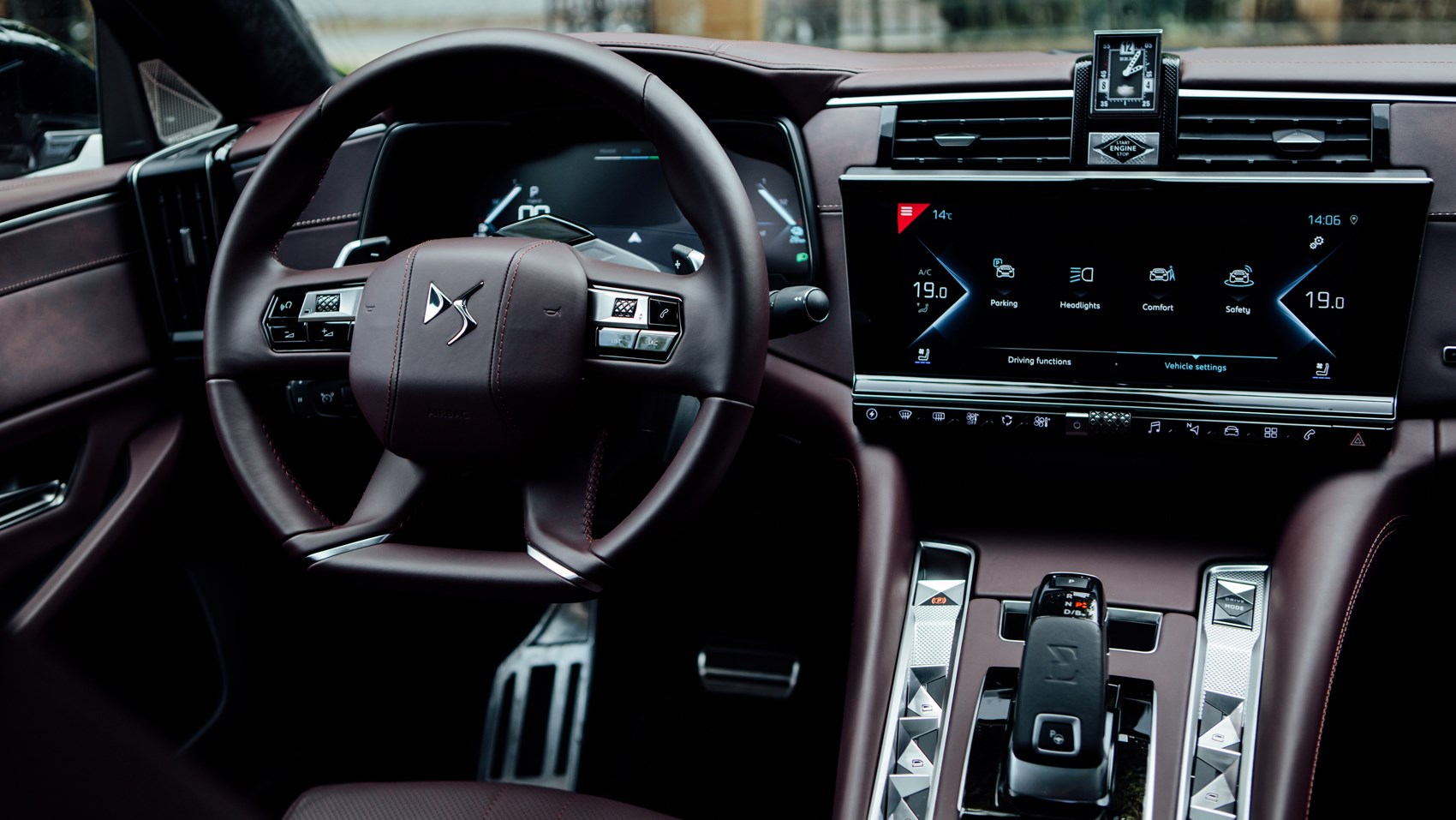
The cockpit is a similar mix of comely and chintzy. The recurring BRM clock remains a crime against taste, and the ‘pearl’ vent accents and chrome strips across the dash trigger bling overload for me. The touchbar beneath the 12-inch touchscreen seems a touch tardy to respond – we don’t mind waiting, but a little haptic feedback to acknowledge a request wouldn’t go amiss.
But the seats are deliciously comfortable, the leather steering wheel silken to the touch, the textured ‘guillochage’ switches distinctive. The air-conditioning is unusually puny: you need three-quarters setting to generate a worthwhile puff of air, which unleashes a fan cacophony that undermines the 9’s civility.
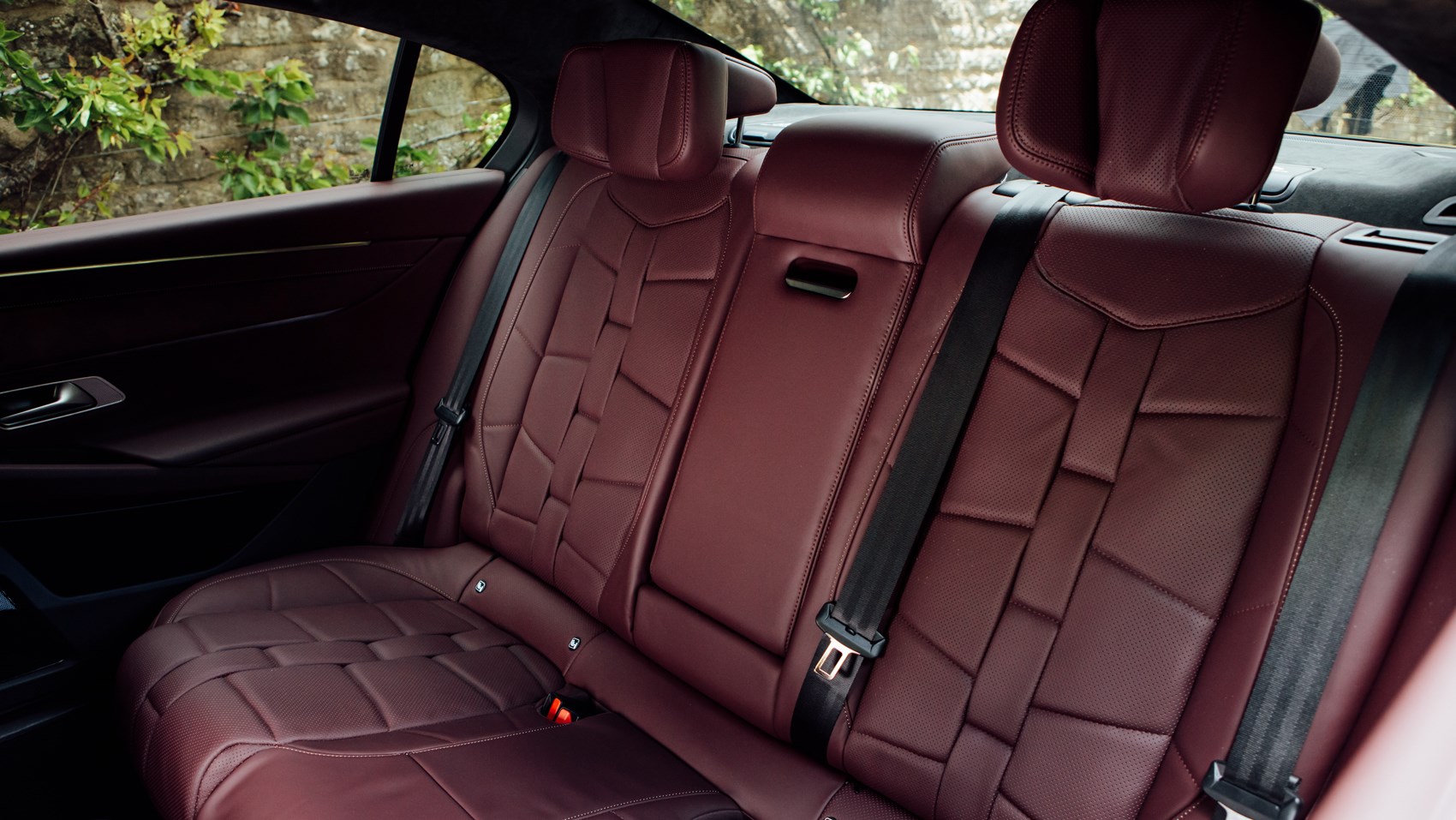
Step into the rear and things are uniformly blissful. There’s heaps of kneeroom and lovely seats which can heat, massage and cool (if you tick that Opera upgrade). Iconoclastic chauffeur companies take note. The boot – long, wide and not very tall – has the feel of a double coffin: it stows 510 litres of stuff.
DS 9: verdict
The 9 saloon is the best DS yet. It delivers on comfort, refinement and fuel economy, and undercuts BMW’s 530e by about £6000 while offering more standard equipment. It’ll likely cost you more per month on a monthly payment, though, hampered by DS’s nascent brand image yielding lower residual values – and the great British public’s herd immunity to big French cars.
But, but… If you’re a fully paid-up member of the awkward squad, like standing beside your car explaining DS to strangers, are French or just plain fall in love with the design, this endearing limo is the Chrysler 300C for our times, Parisian-style.
